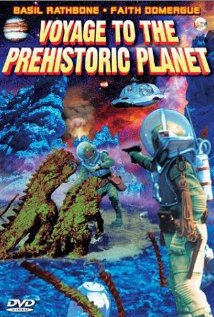I’m of the opinion that film is powerful, powerful enough that large segments of our imagination is guided by cinematic relationships. That even the nature of reasoning is affected, even as deeply as how we reinvent practical logic. There are lots of examples to show and arguments to be made — they are in a collection I am incubating.
Science fiction is a special case, at once more obvious. Not all as subtle as what I study. But surely it had as profound an effect on daily lives.
To understand this film, you need to know some history. Alas, many readers will not appreciate the cold war that was the overriding impetus for the two largest political entities from the 50s through the 80s.
Some dates for you. In 56, the US saw “Forbidden Planet,” with a superintelligent robot, space travel and mind augmentation. It was based on Shakespeare’s most interesting play and is still among the best scifi films.
In 57, Russia launched a satellite and declared that they “owned” space (and would put nuclear bombs over the US ready to “drop”). Also, that soon, they would have men in space.
In 58 one of the most successful Russian filmmakers (Klushantsev) made a film about “cosmonauts” and space travel that was enormously successful with the Russian public (and their captive peoples). That film was the beginning of a deeper than usual partnership between Klushantsev and the propaganda arm of the Kremlin.
In 1960, an unknown in East Germany made a film (Road to the Stars) about cosmonauts on Venus. It was a runaway hit. In the following year, Kennedy made his famous pledge to put an American on the moon by the end of the decade.
The Soviet moon program had some catastrophic disasters, in large part resulting from lies told to the old Stalin regime by Soviet scientists working on ballistic missiles supposedly (but not really) capable of destroying the US. Khrushchev had these scientists destroyed or imprisoned. That meant no moon program.
But the people already were convinced that Venus was the prize, so the space propagandists seized on this and retooled their manned program as a race to Venus, forget the moon. As a consequence, Klushantsev was given a (for the times and conditions) vast budget and told to make a film of the heroic Soviet nation exploring Venus. This he did in the 62 “Planet of Tempests,” known in the US as “Planet of Storms.”
The effects developed by this team would be used in strange circumstances for the next 8 years. This crew filmed fake footage of real spaceflights. The Kremlin was never so bold as to fake a success when everyone knew the missions ended in fiery death. But they did decorate their successes with these true-fake movies. The most famous was the 65 spacewalk of Leonov, wonderfully believable until you wonder who is holding the camera. Oddly, the propagandists assumed that the camera eye was such a magical omnipresence that no one would ask.
Anyway, that 62 film was somehow procured by the infamous Roger Corman. He shortened it and dubbed in English. He substituted the blank female (who says in an orbital craft) with an even more blank female. One wonders why; Faith Domergue had been hot 15 years earlier but here is wallpaper. And he adds an earthside leader who radios a few times, played by the already embarrassing Basil Rathbone. Something interesting could be said about his Sherlock Holmes here.
Kubrick’s 1968 2001, used many conventions from this shop, even when they went against the science of the thing. And ever since, on through “Star Wars,” we have that single vision of what space SHOULD look like.
Anyway, when you see this, you are seeing all these layers. Straight fiction, political fabricated truth, the unreal as more real than the real, the persistence of cinematic imagination, and the crass, stupid exploitations of the whole thing by Hollywood.

